
The design for the new secondary school building clarifies the previously unclear interface between the school grounds and the southern part of the neighbourhood and completes the network of the neighbourhood's open spaces. The compactness of the new building permits the preservation of a large part of the ground-based open space. In the future, this space will be available to both the pupils and the local community.
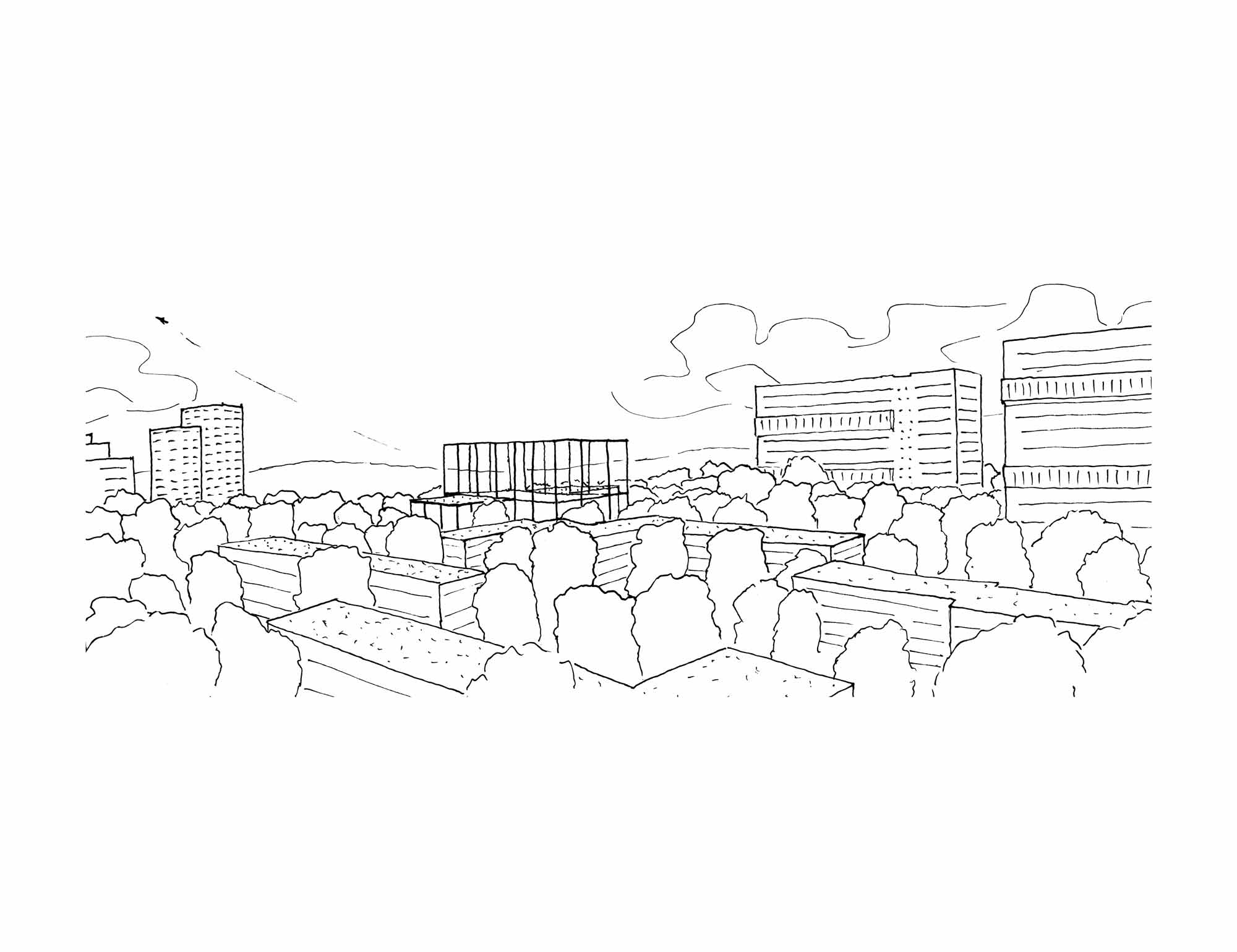
The towers and high-rise slabs of Unteraffoltern II stand out as imposing structures visible from afar in the flowing green surroundings. With respect for the existing buildings, the sports field on the roof terrace complements the ensemble in a contemporary form.
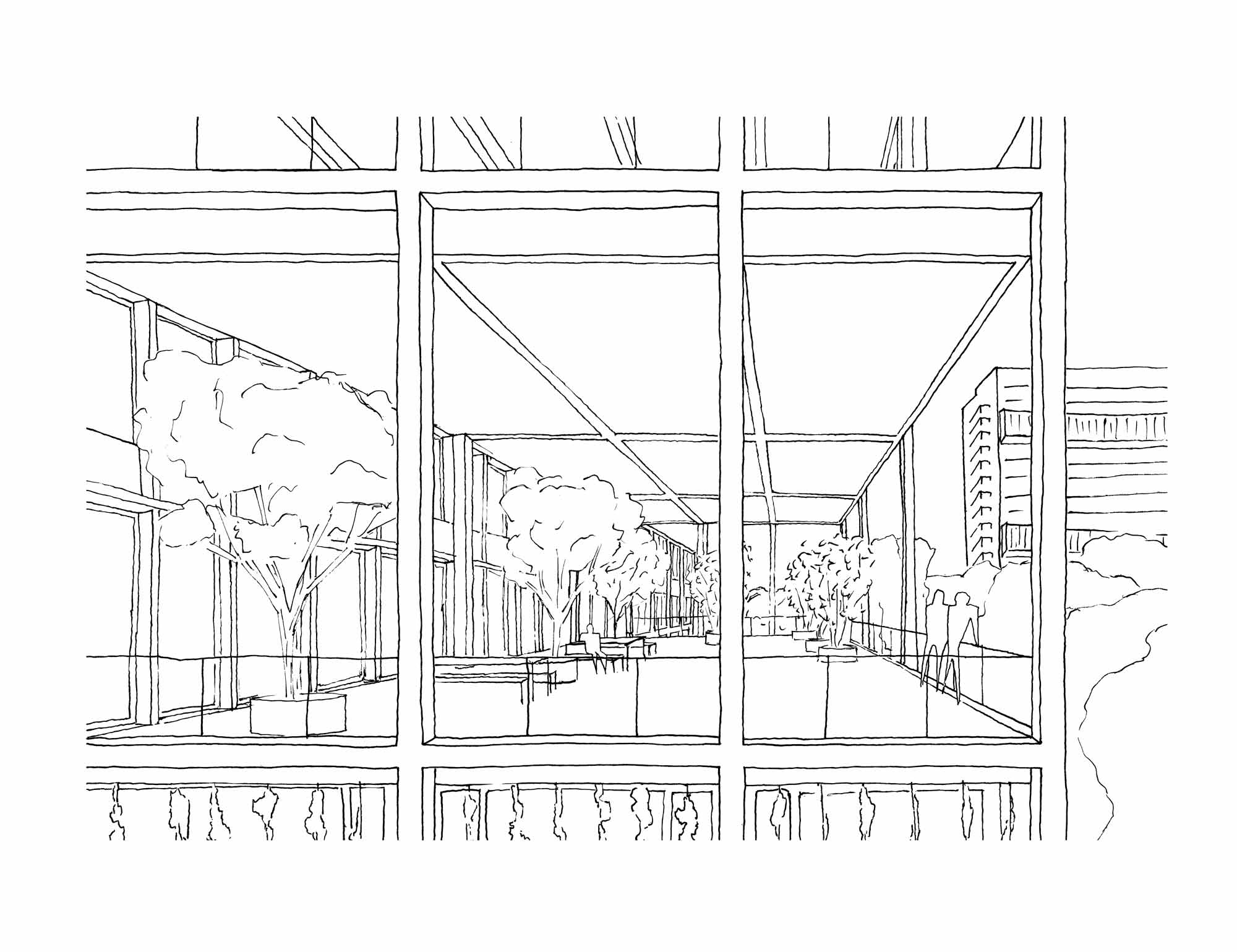
The two large terraces on the first floor are allocated to the jointly used classrooms and serve as covered recreational areas. If required, they can also be used as outdoor classrooms or for crafts.
The new building consists of two intersecting volumes and is enclosed by a slender steel skeleton. The four-storey longitudinal wing in an east-west direction completes the existing structure of the school complex around the enclosed courtyard. The higher intersecting volume follows the superordinate development pattern in a north-south direction. The superimposition of the volumes creates the angled façade recesses along the street that are characteristic of the neighbourhood. The characteristic differences in building heights and volumes serve to create distinct outside spaces and set a clear accent. This makes the ensemble clearly recognisable as a public facility.
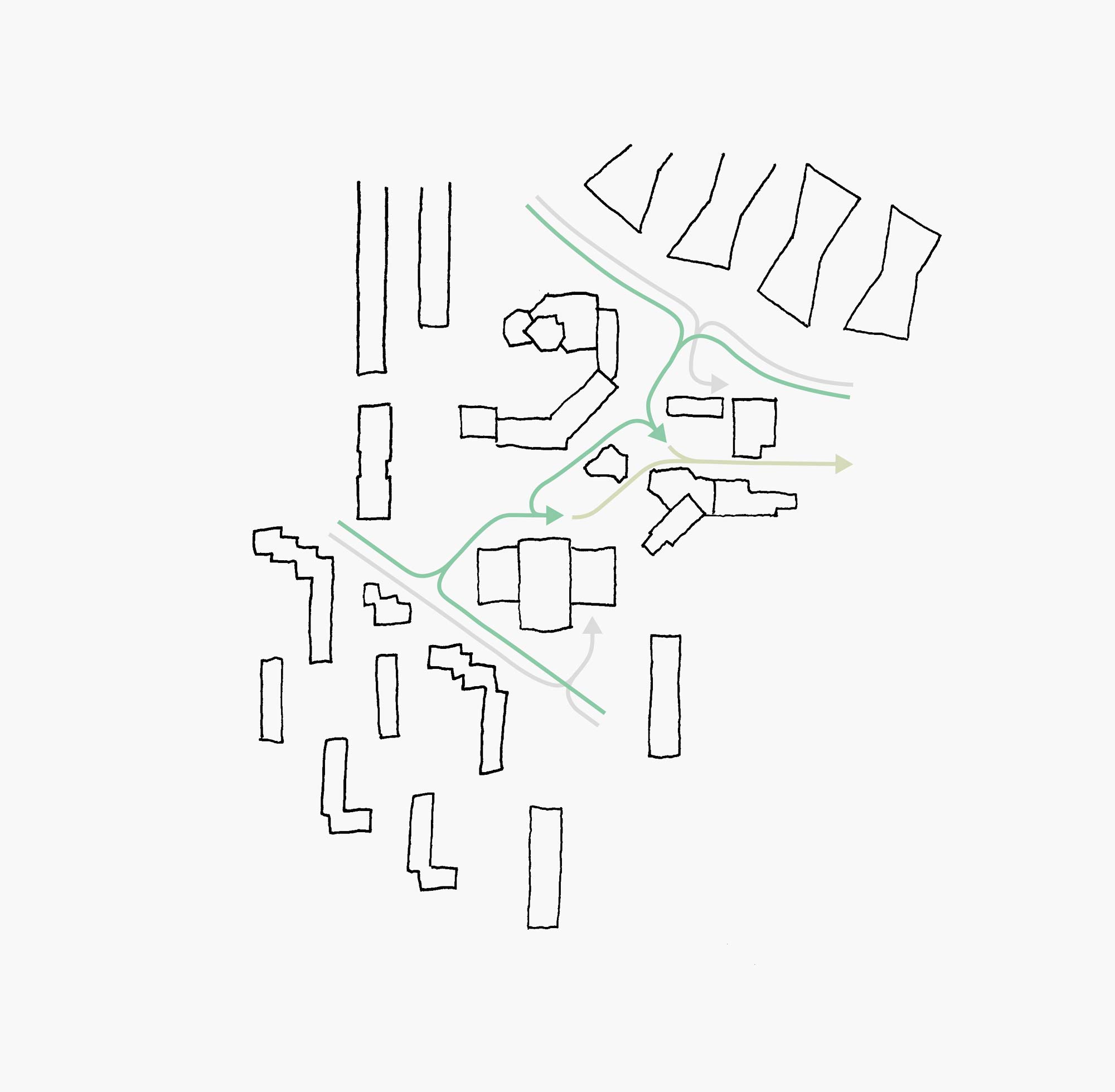
The courtyards also serve as arrival points. They can be reached safely on foot. With the new schoolyard, a diverse internal sequence of rooms up to the sports fields is created. As with the primary school building, the new building will also consistently separate pedestrian and motorised traffic.
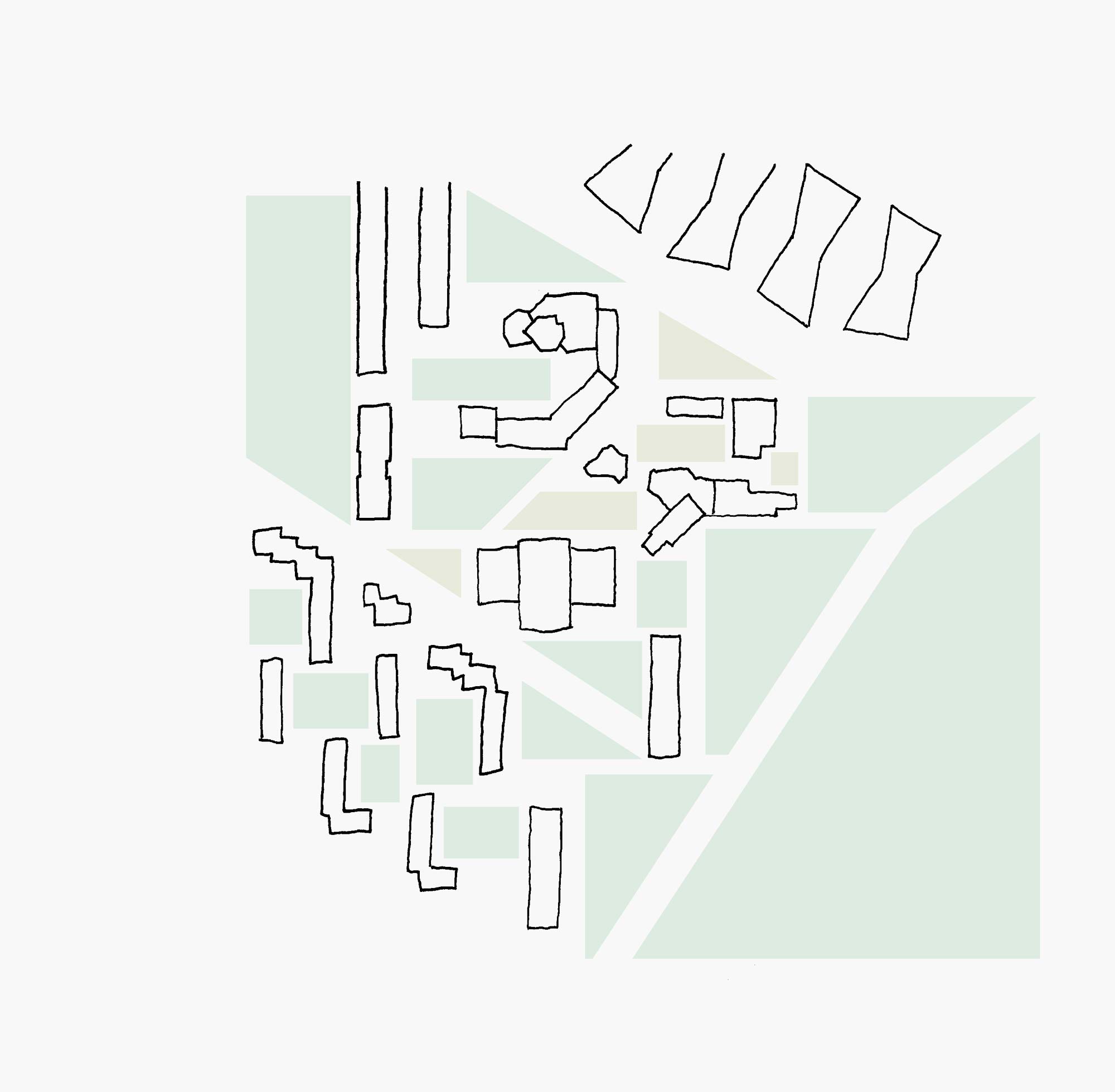
Due to the mostly offset arrangement of longitudinal buildings arranged in an orthogonal grid, internal spaces are created that smoothly merge into one another.The break areas of the primary and secondary school are seamlessly integrated into this outdoor space system.
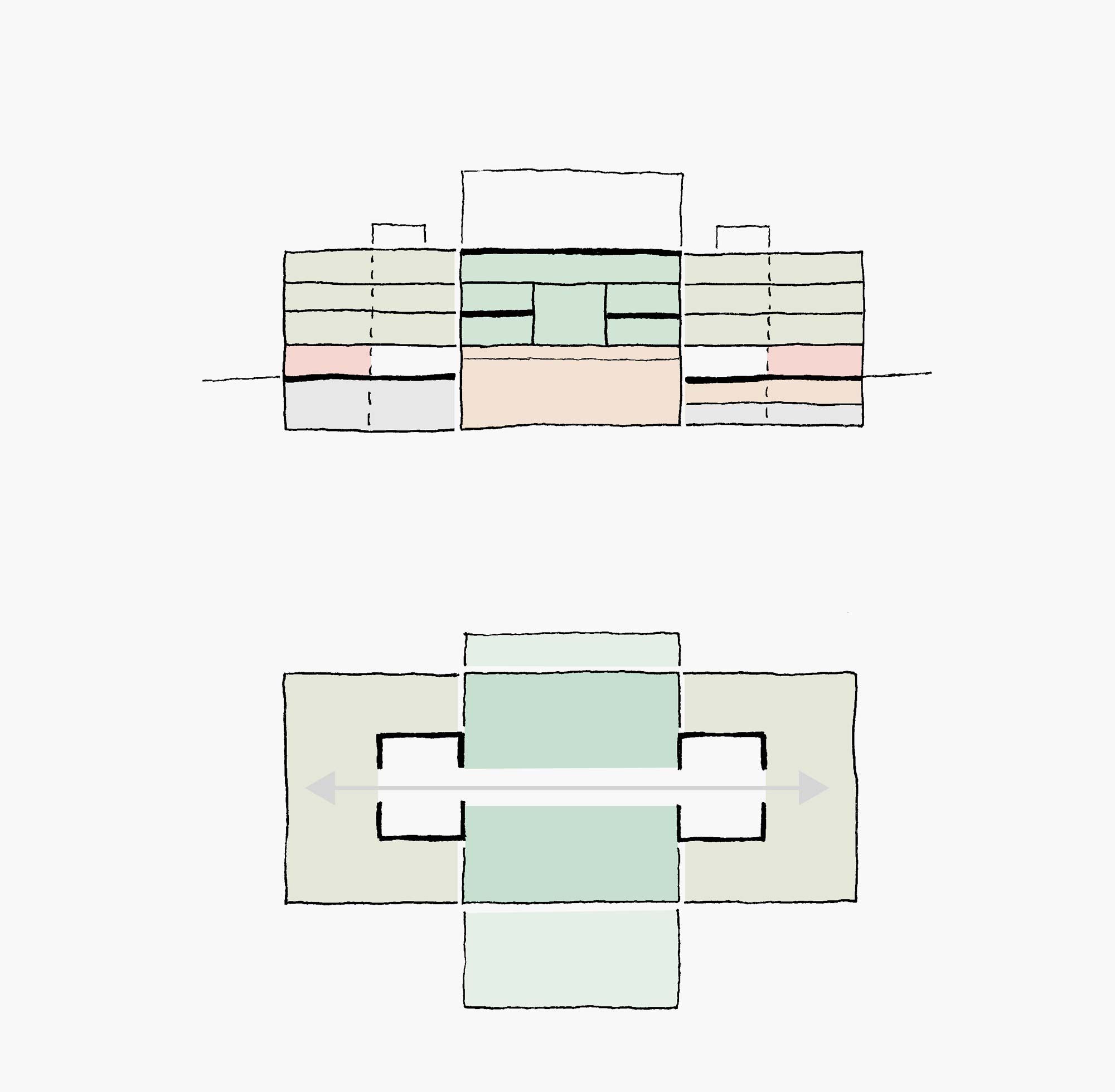
All uses are directly accessible from the circulation cores and can be accessed and used individually. The clusters with the classrooms and group rooms are located at the two ends of the first to third floors and are thus oriented on three sides.
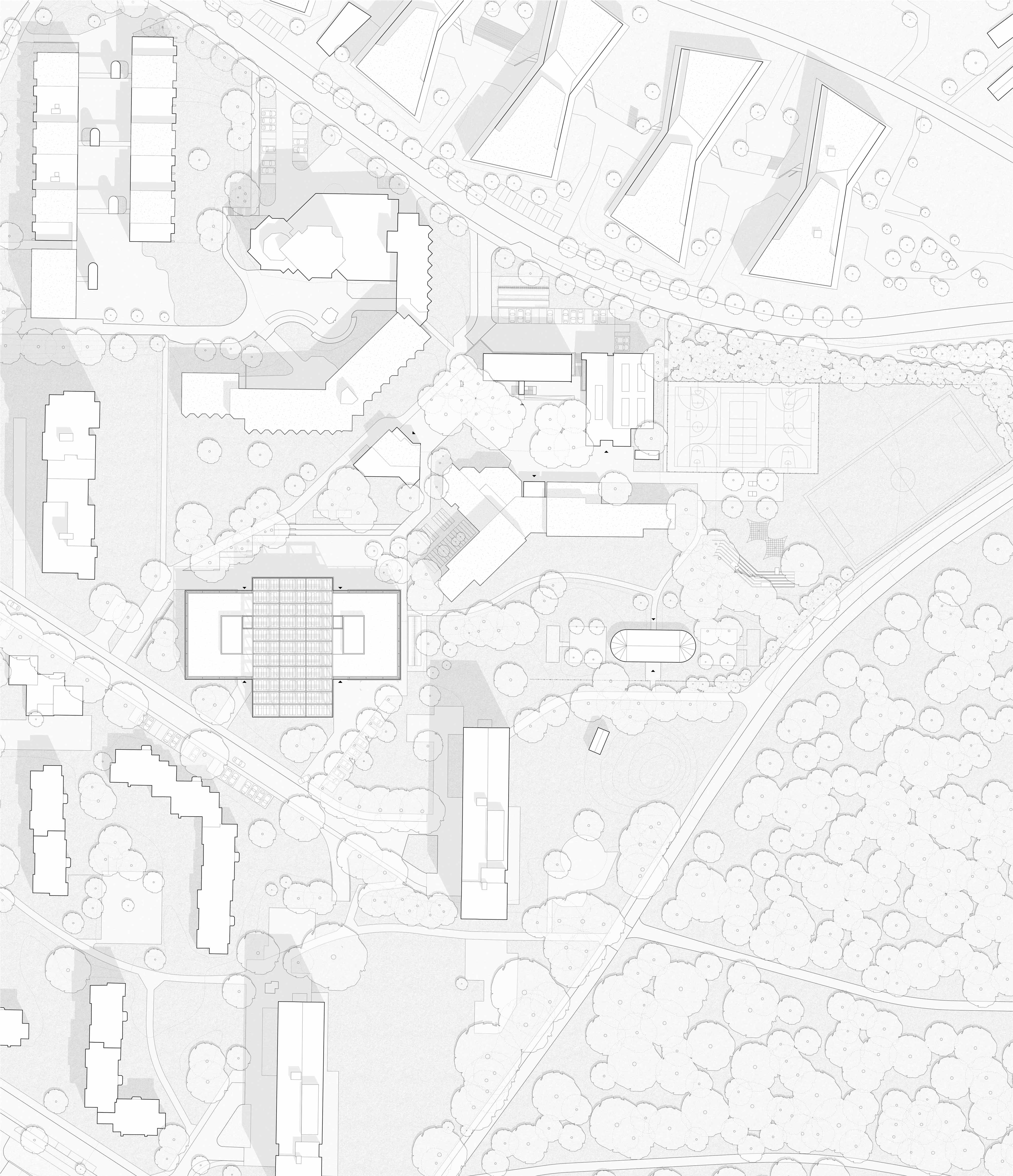
Site plan
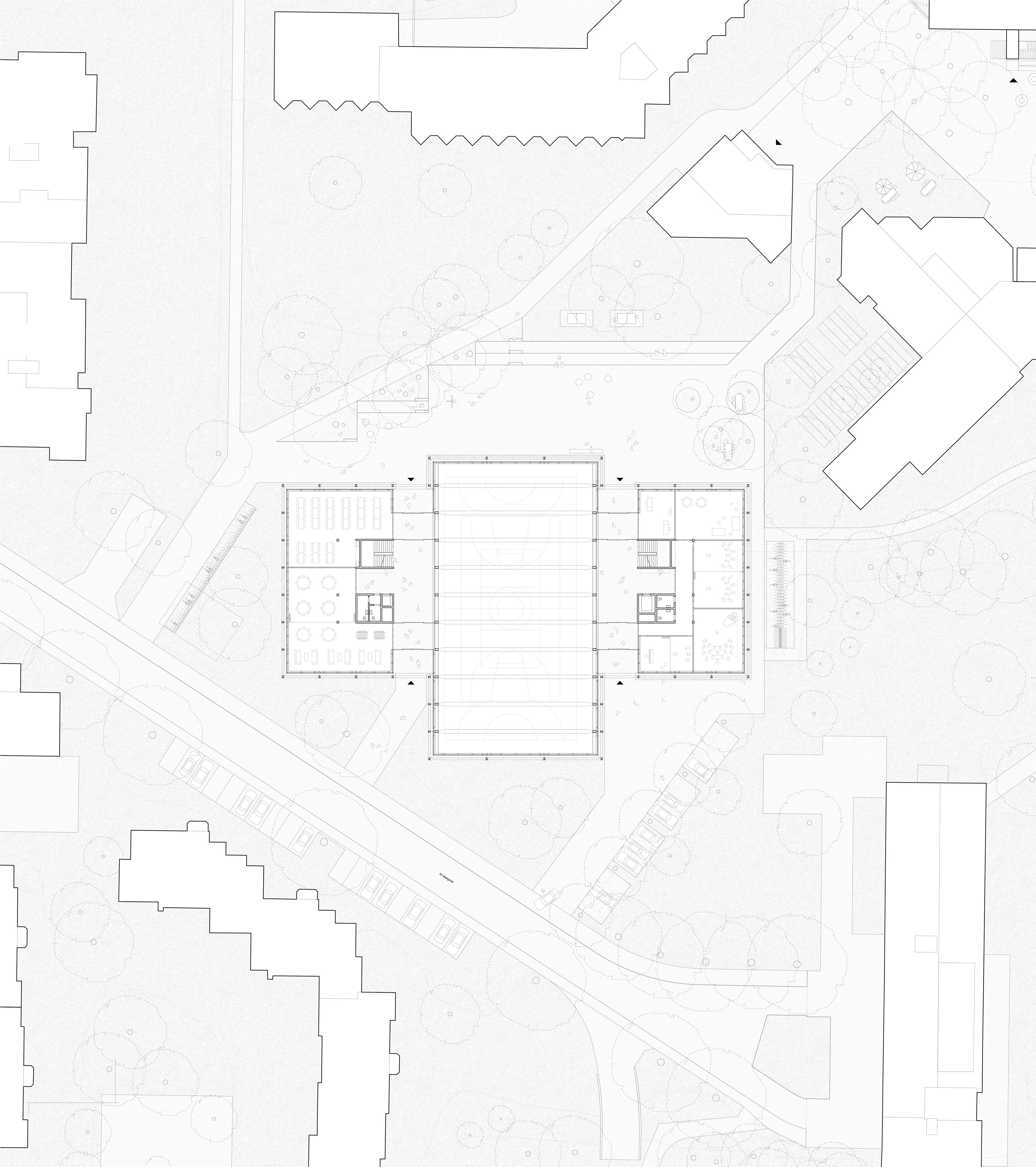
Ground floor
The public walkway is going to become the main access route to all outdoor spaces. As with the primary school, it leads to the secondary school courtyard, the main arrival point. The schoolyard is directed inwards. It is a small plateau with greenery and seating steps, and is integrated into the surrounding terraced spaces, which are interspersed with trees. The division into active zones and shady retreat areas allows various social groups to stay and interact simultaneously.
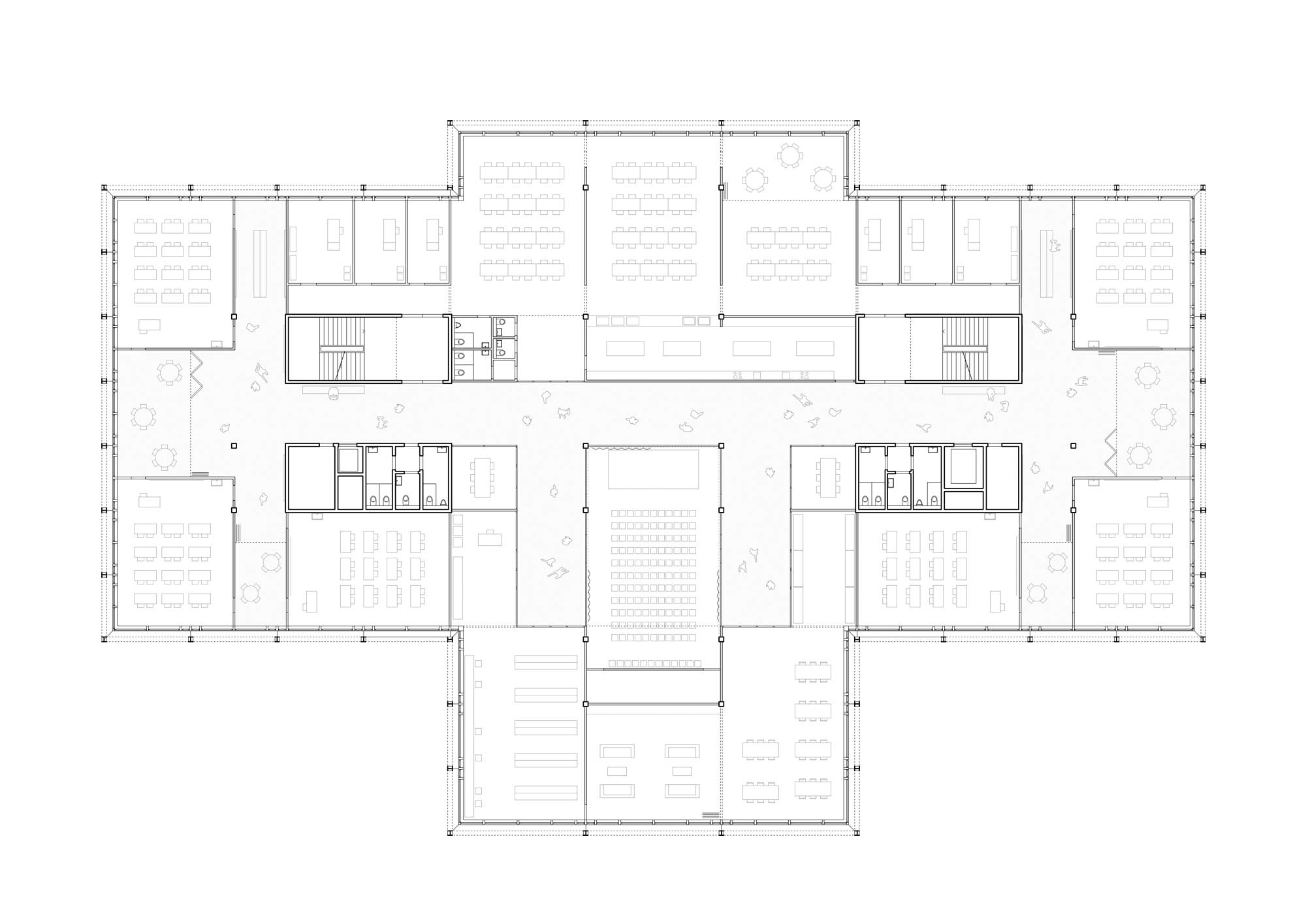
First floor
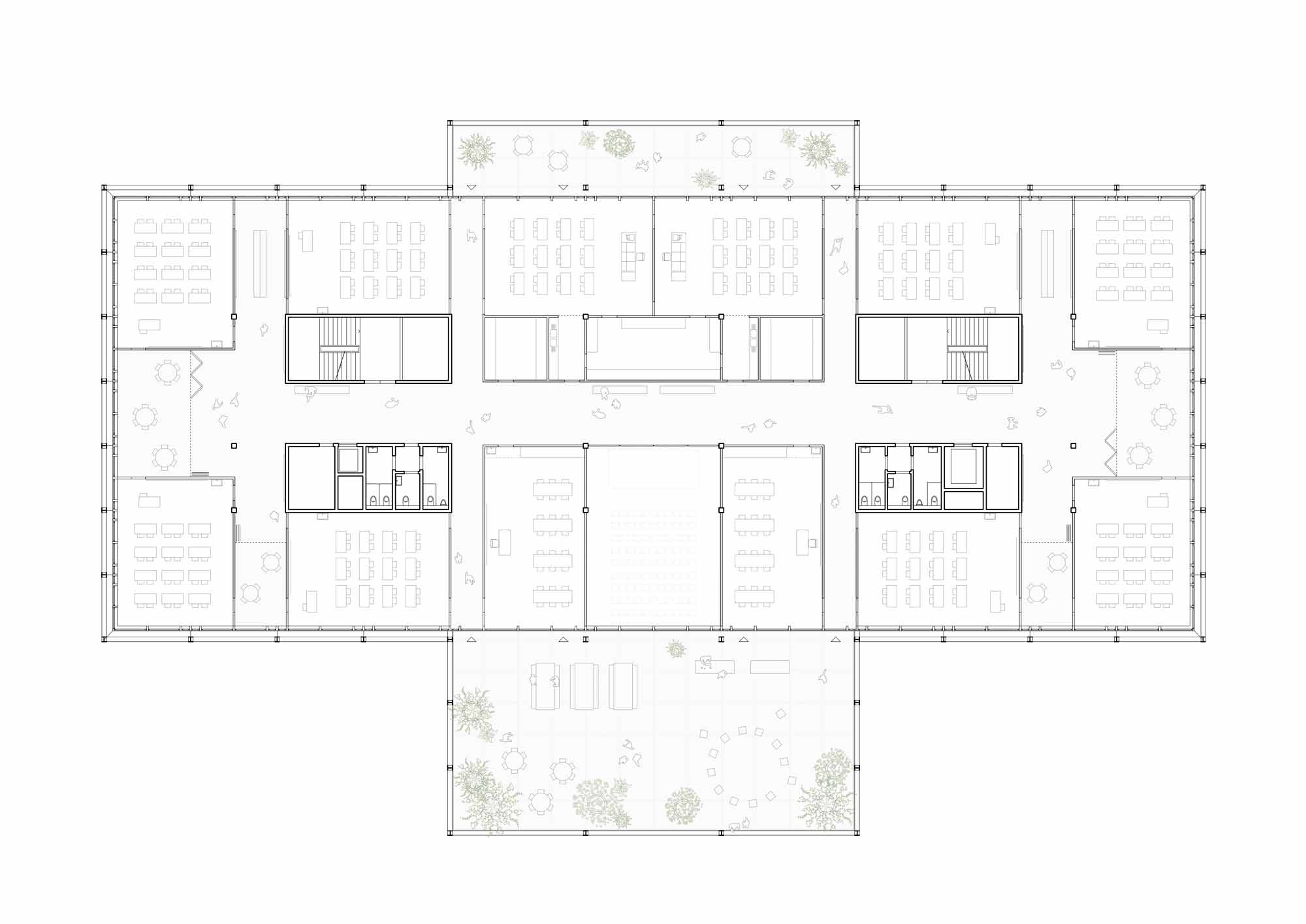
Second floor
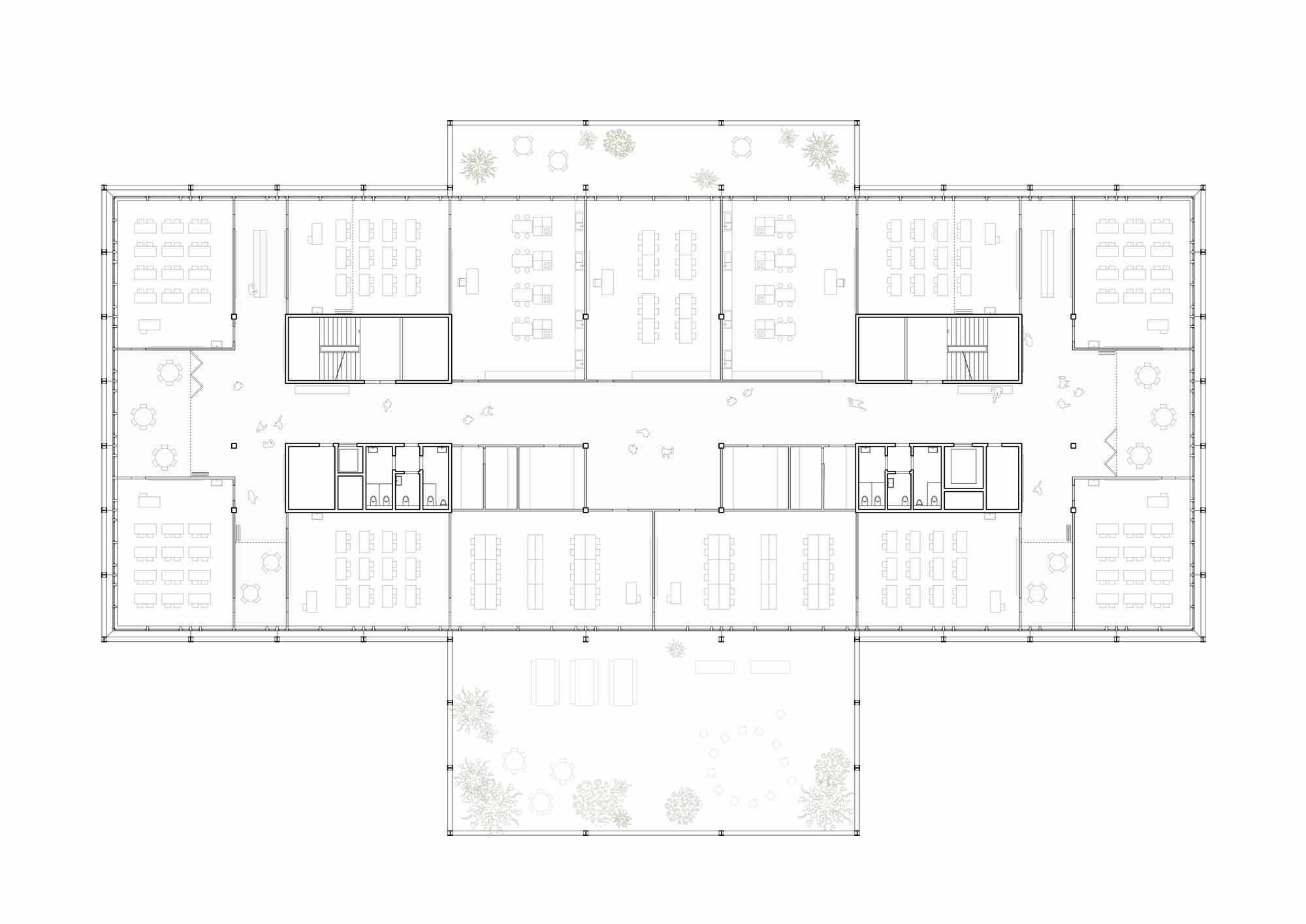
Third floor
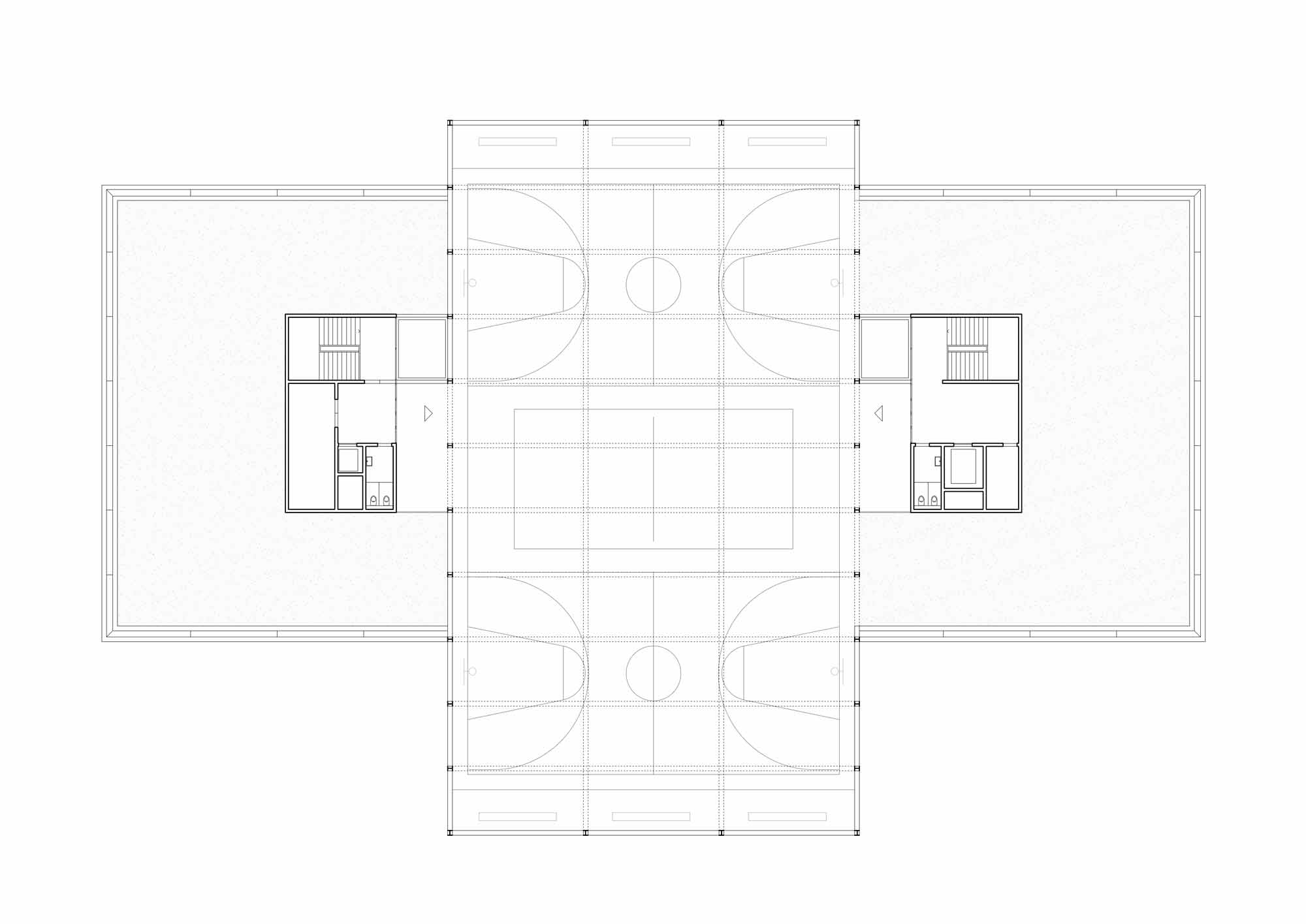
Fourth floor
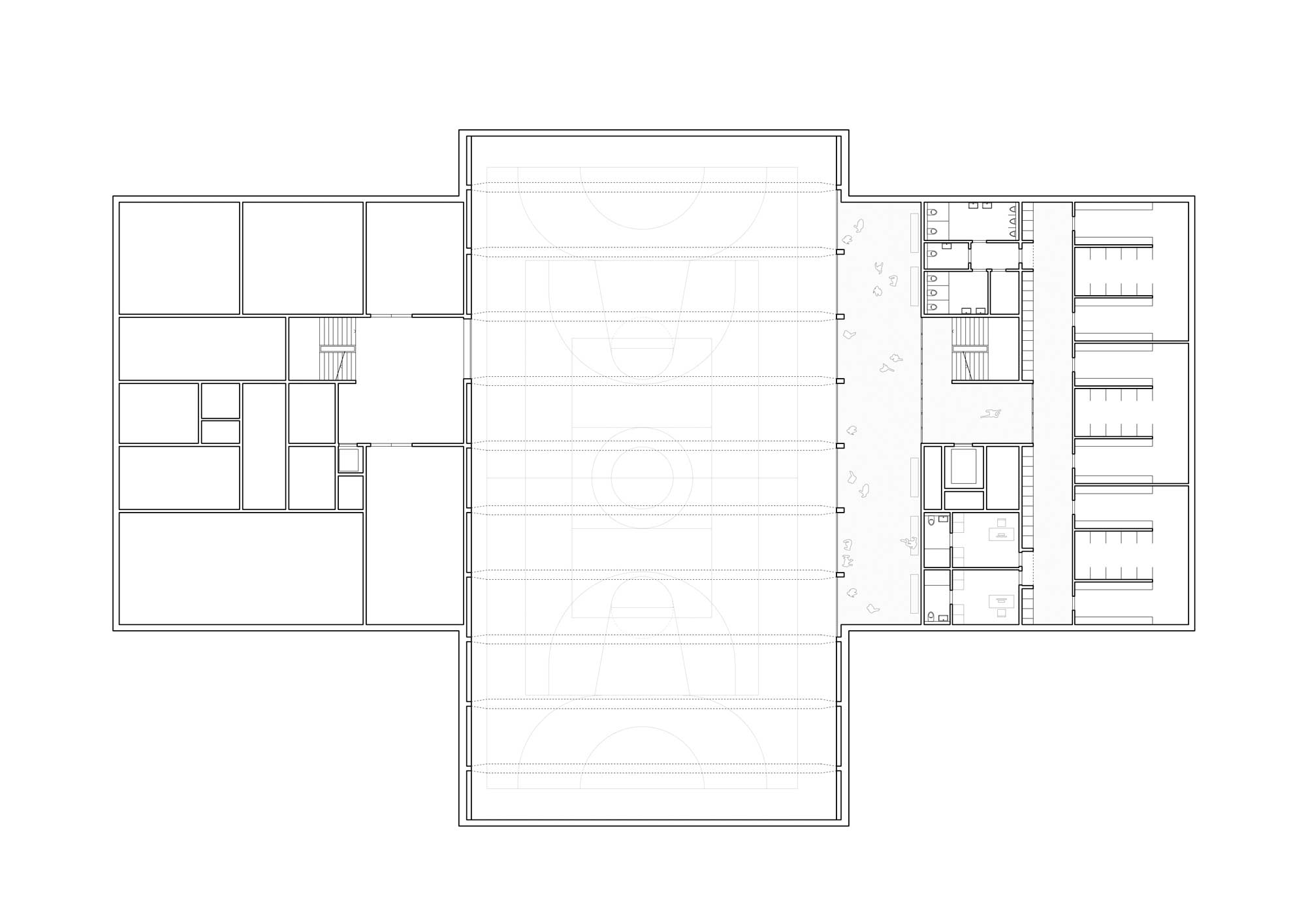
First basement floor
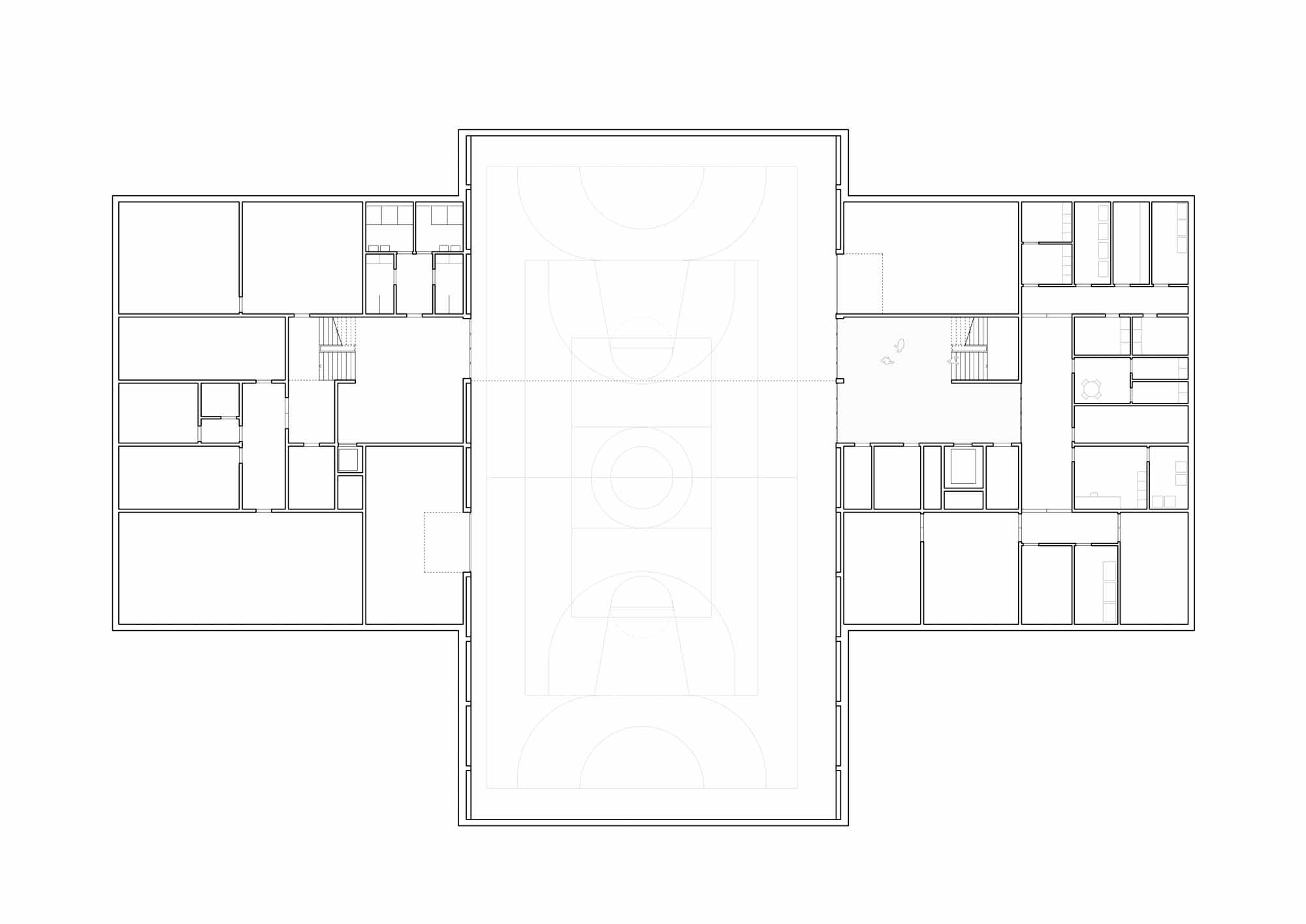
Second basement floor
A characteristic design feature of the new building is the external supporting steel framework. It supports the floor slabs and gives the building the appearance of a pavilion in a green landscape. The façade, set back from the grid, is discrete and has a functional materiality. Thanks to the external supporting structure, it has no static function and can be efficiently prefabricated in timber-frame element construction and quickly assembled. Slinging aids in the interspace allow vertical greening of the entire façade with climbing plants.
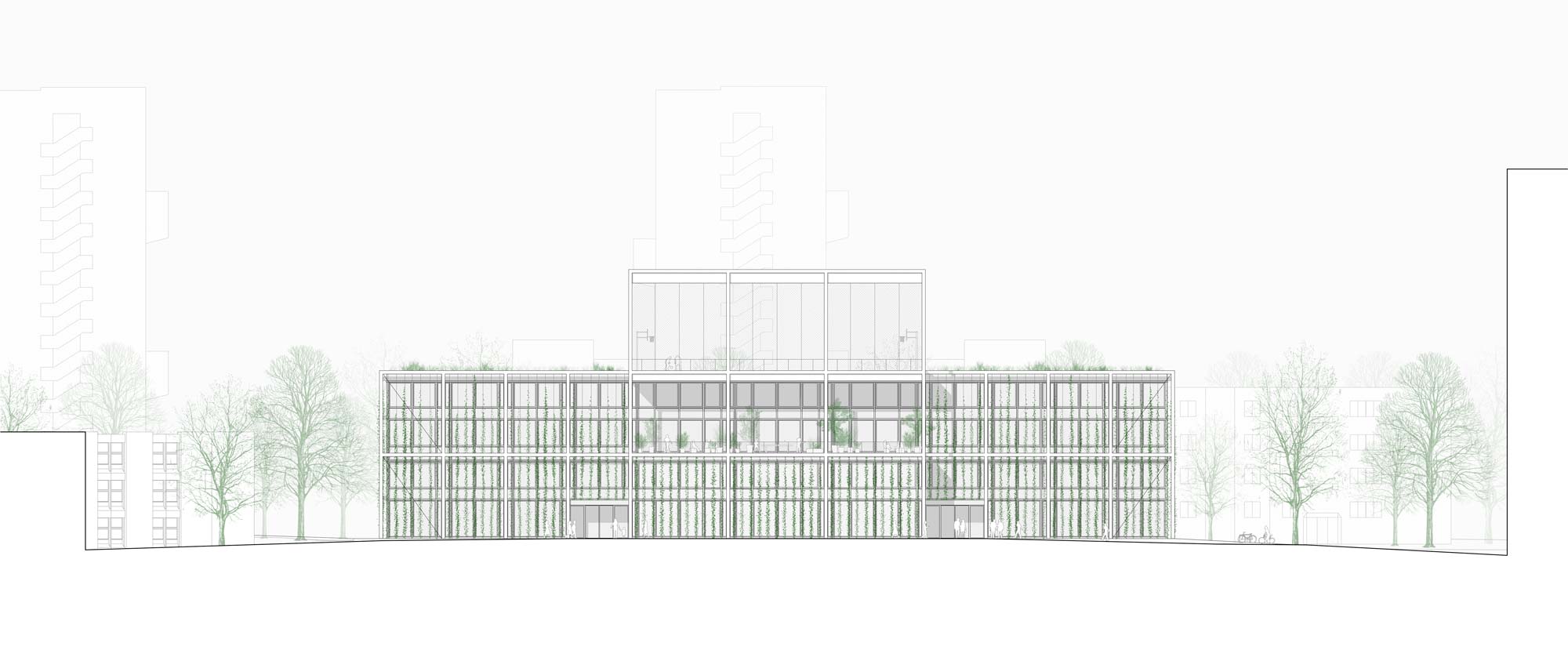
Northern facade
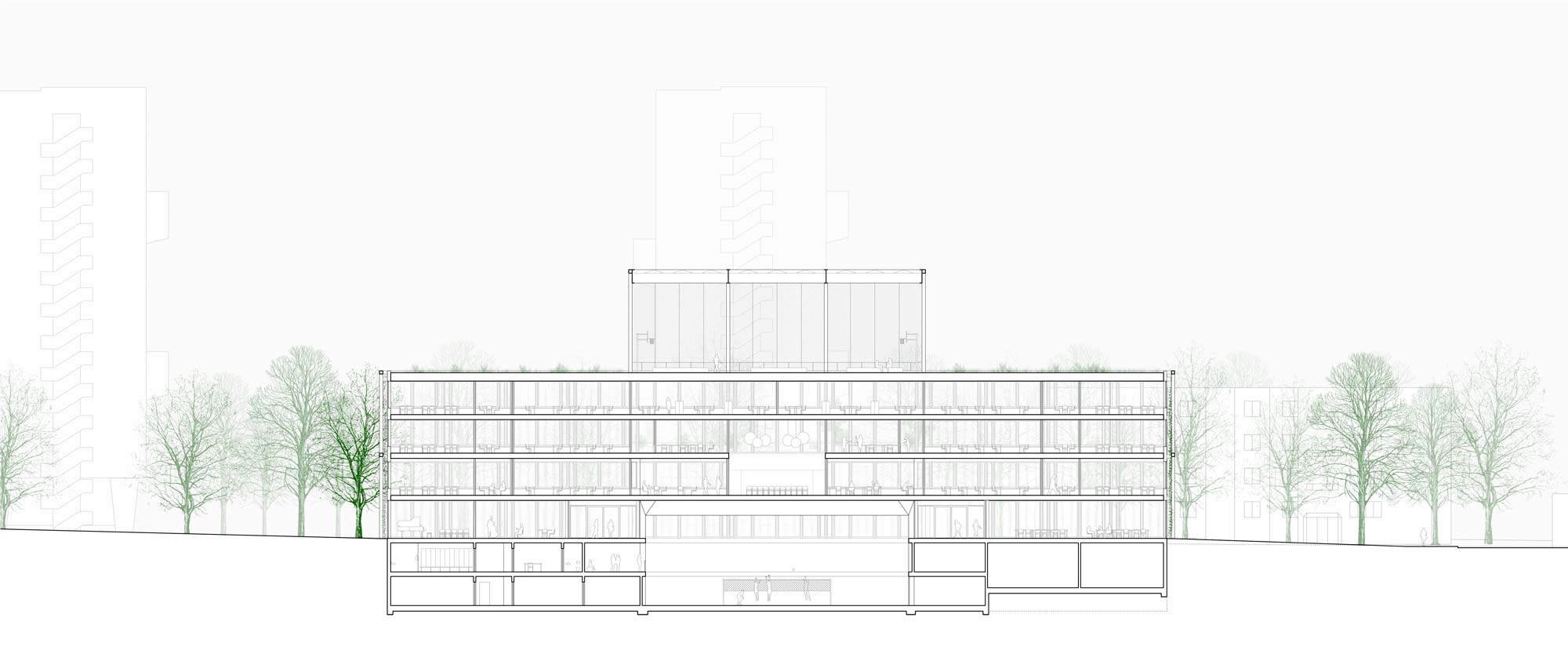
Longitudinal section A
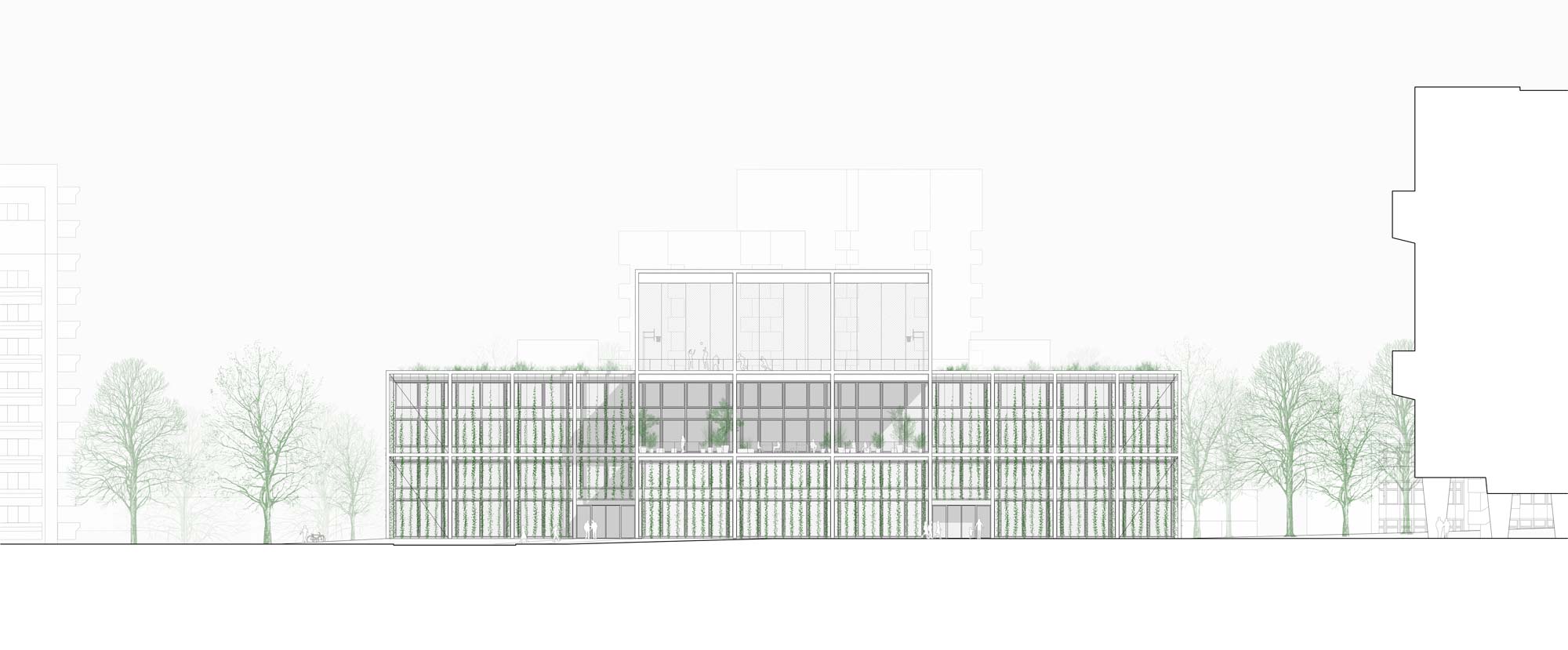
Southern facade
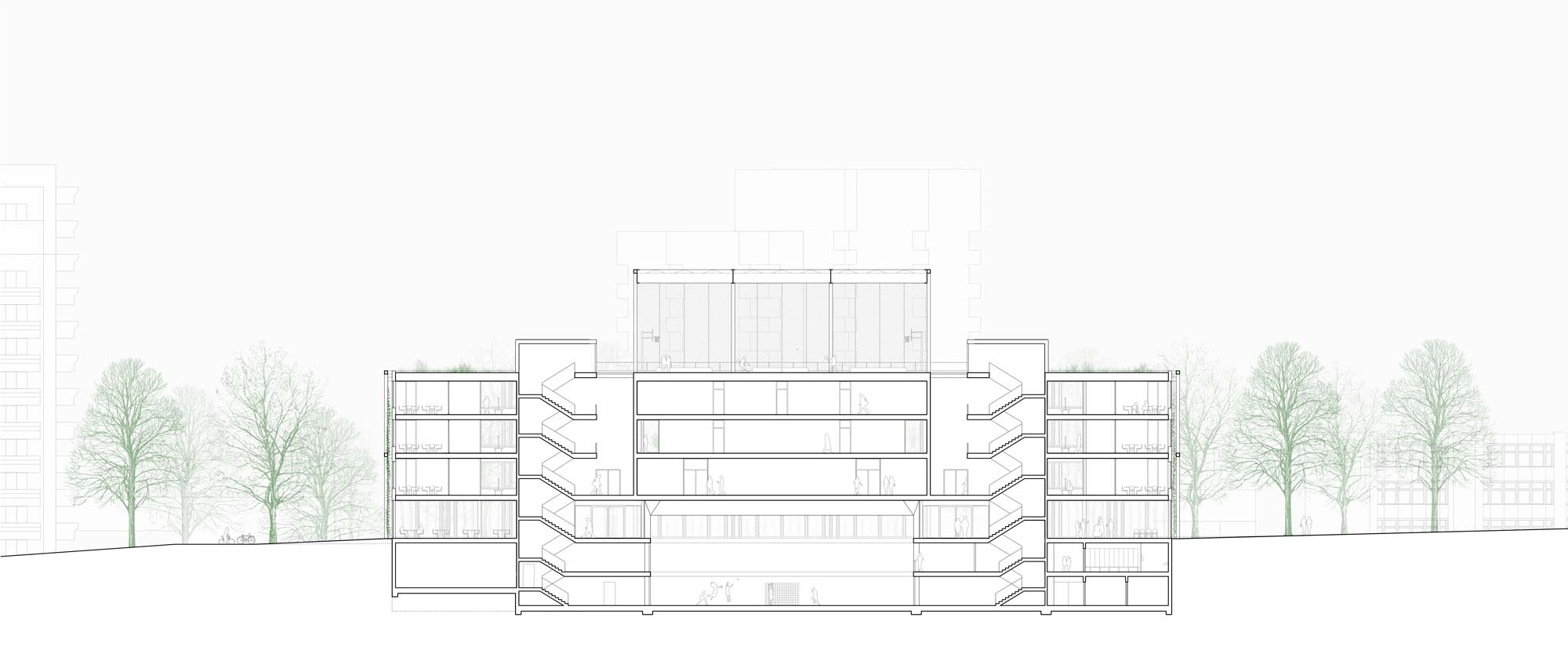
Longitudinal section B
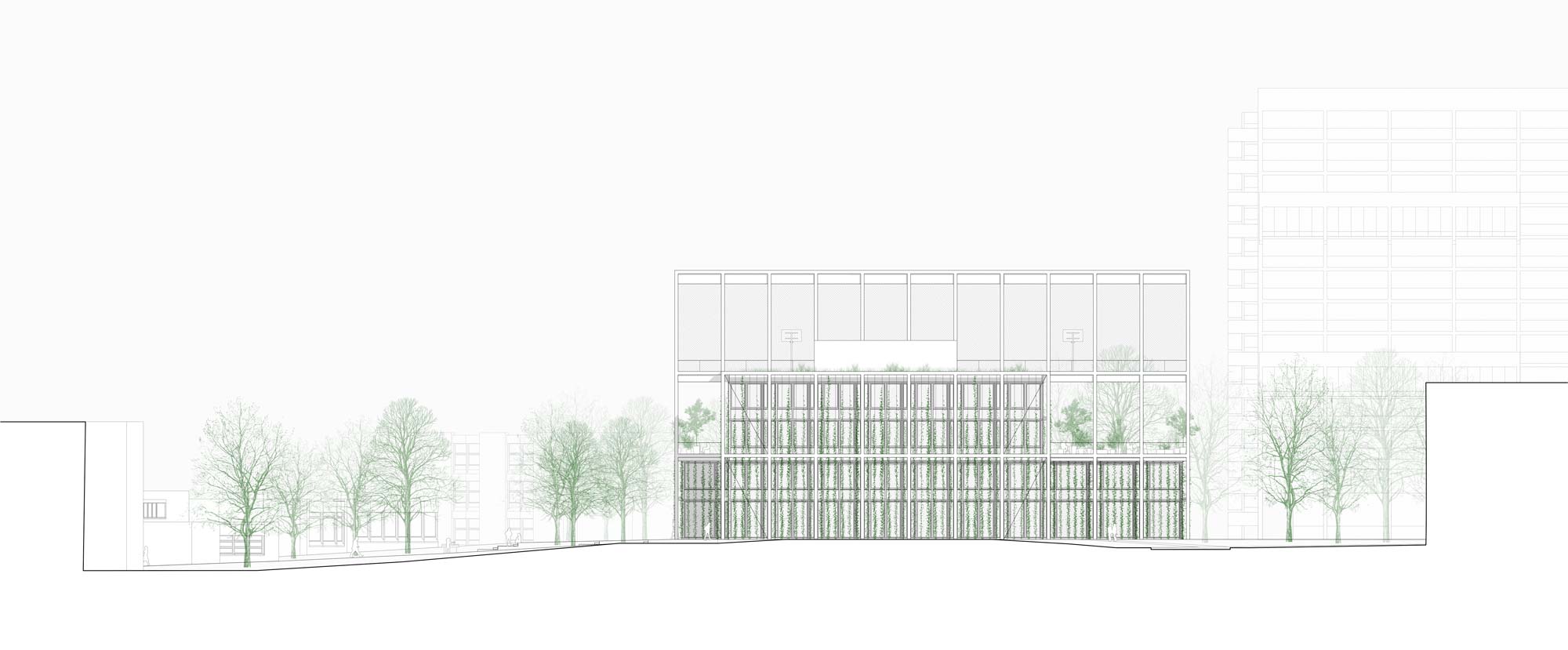
Western facade
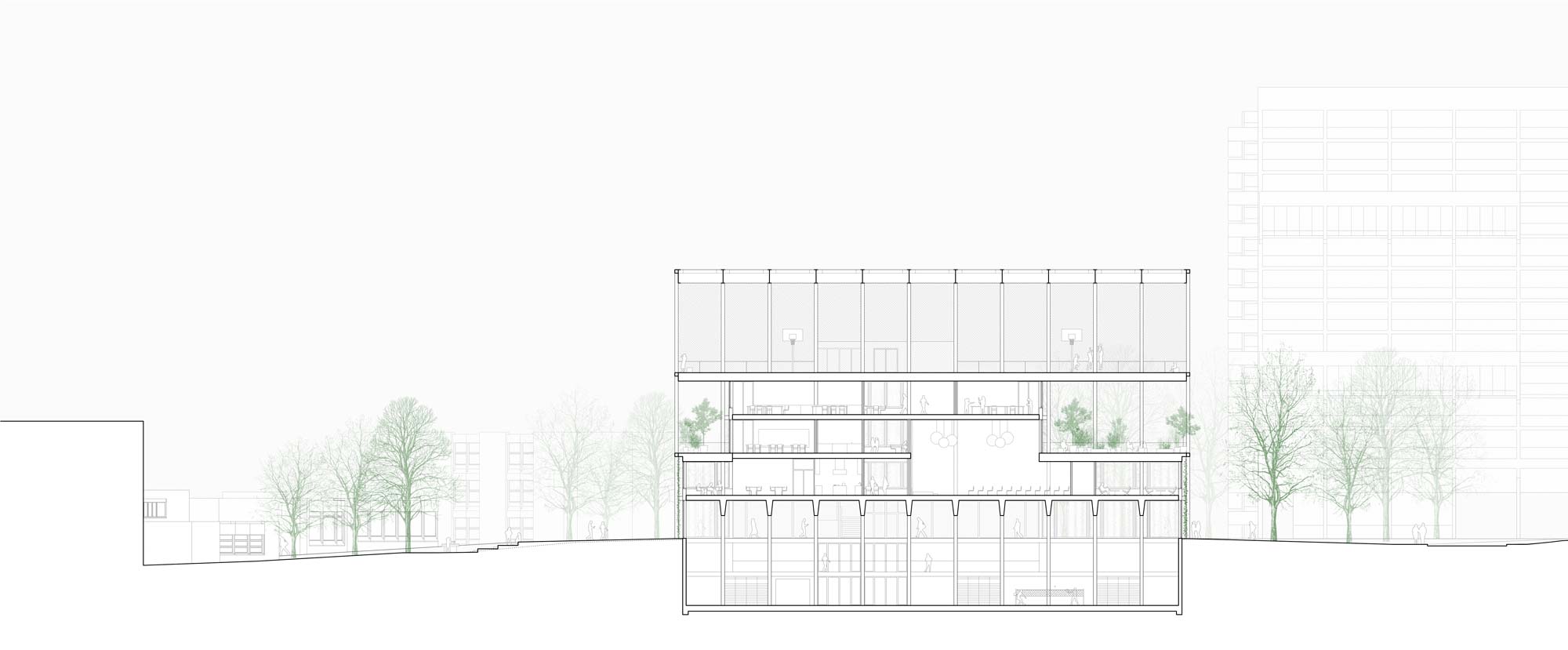
Cross section
The load-bearing structure of the building consists of a uniform steel skeleton, which is very prominent on the outside and subtle on the inside. A central feature of the skeleton structure is the high degree of prefabrication for quick and easy assembly of as many identical steel and reinforced concrete elements as possible and the minimisation of in-situ concrete. In addition, the skeleton enables the principle of maximum flexibility, so that uses and interior structures can be adapted at a later date at any time.
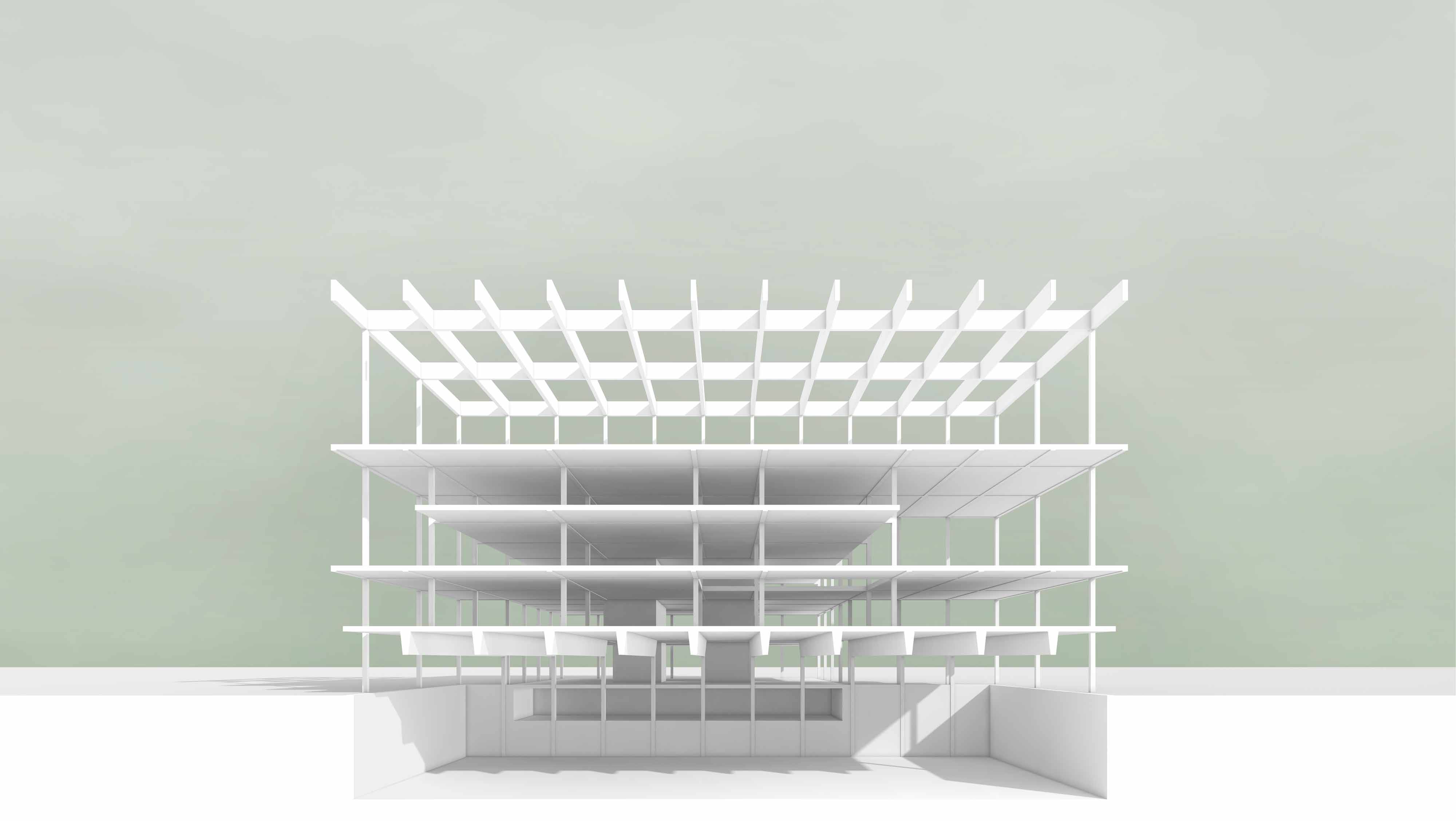
Secondary school Im Isengrind Zurich. Status: Competition entry (not ranked). Program: New secondary school building with gymnasium. Location: Affoltern, Zurich (ZH). Schedule: Competition 2020. Landscape architecture: ASP Landschaftsarchitekten AG. Structural engineering: Mario Rinke. Visualization: Filippo Bolognese. Organizing body: City of Zurich, represented by the Real Estate Department. Collaborators: Michael Wagner, Raphael Vanzella, Sophia Disiou, Milo Strub.